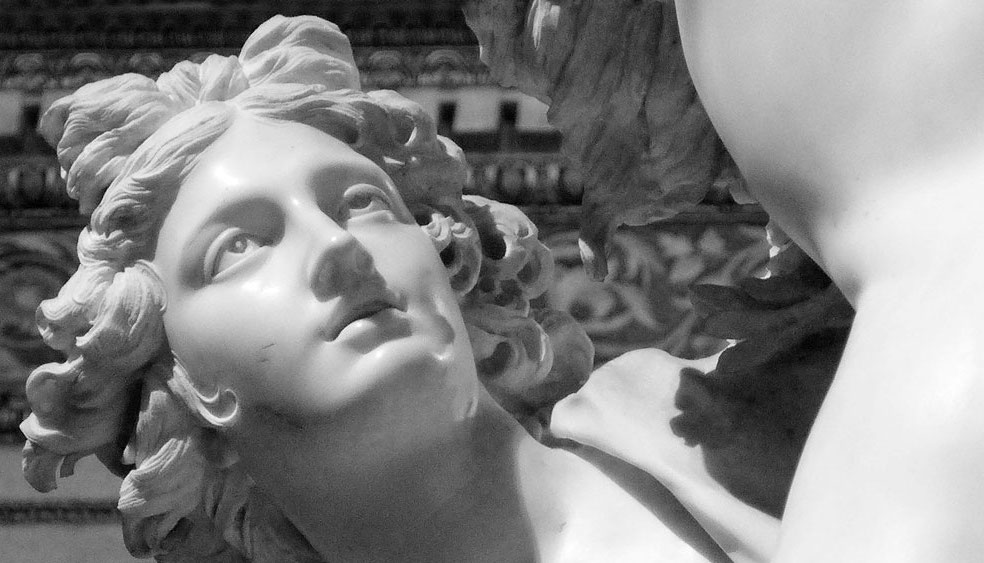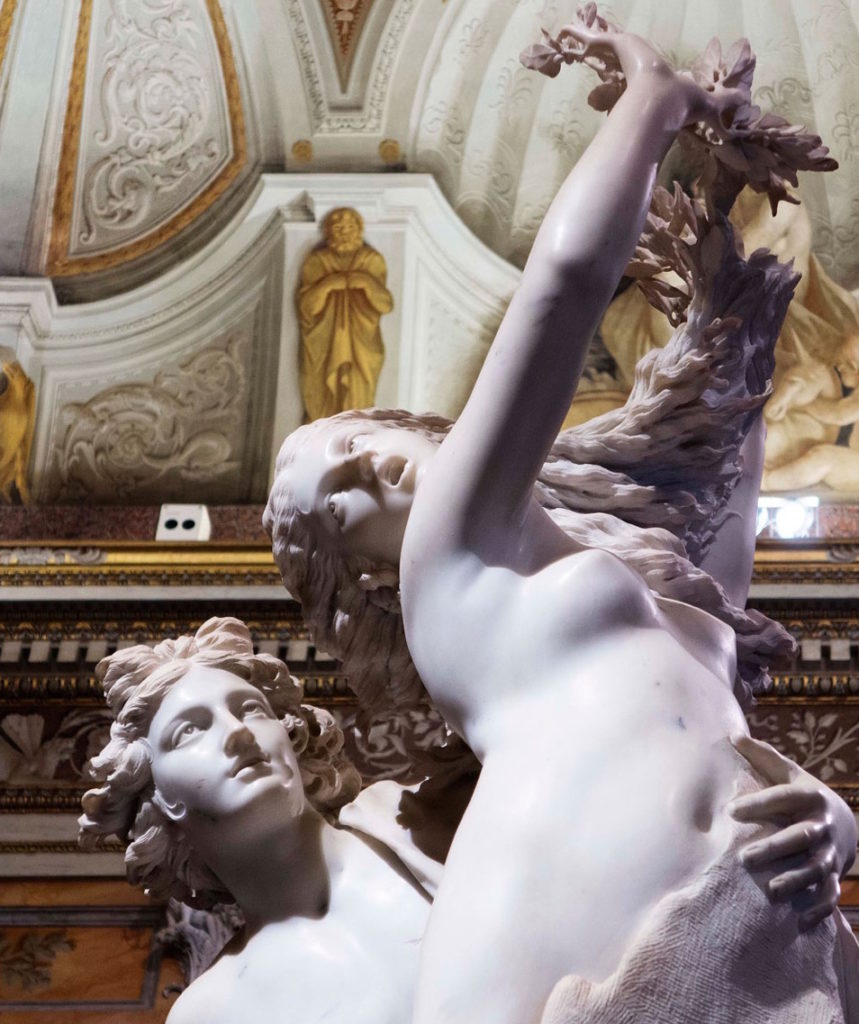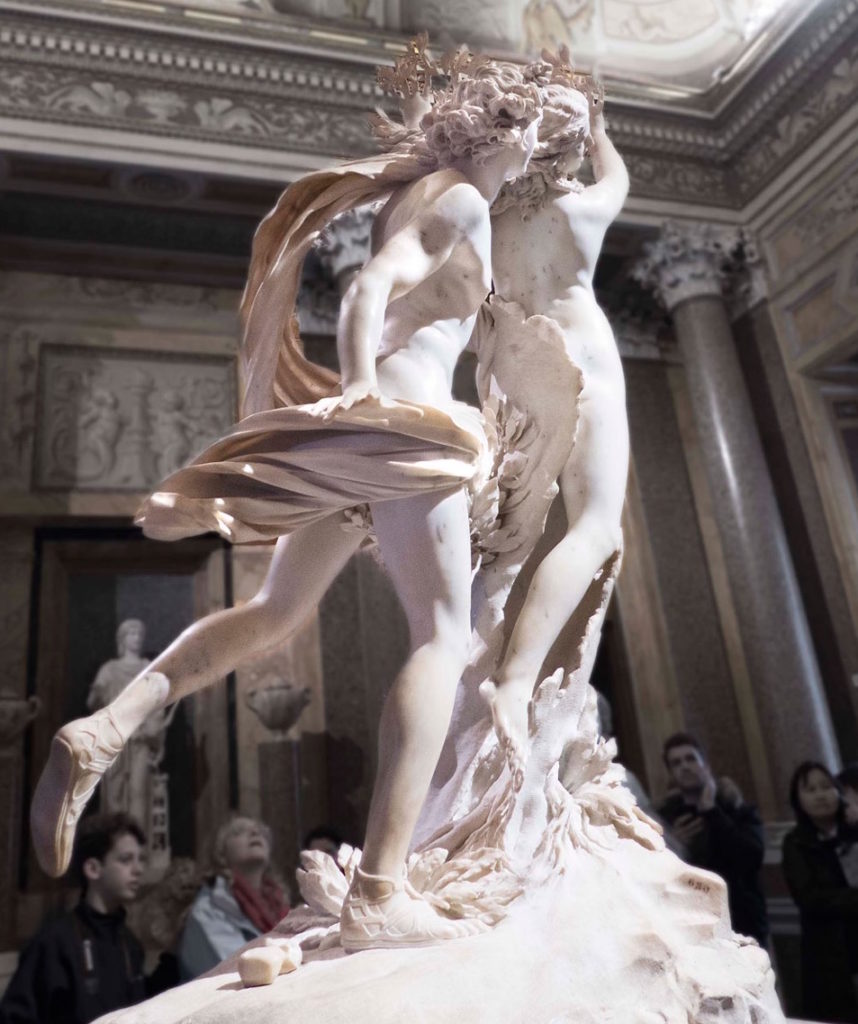
06 May THE STORY BEHIND APOLLO AND DAPHNE
First time visitors to the Galleria Borghese are often surprised and a little annoyed that they must leave all their belongings outside the gallery. Not even small handbags are allowed inside. But as soon as you enter the gallery the reason is obvious: it’s more like visiting a private home, with artworks not only on the walls but intimately located in the middle of rooms as well. No place for a carelessly swinging handbag here!
In a treasure house boasting works by Caravaggio, Titian, Raphael and Rubens, it’s asking for trouble to single out one masterpiece. But the collection boasts about half a dozen sculptures by the darling of the Baroque popes, Gian Lorenzo Bernini, and it is justifiable to nominate Apollo and Daphne as the most spectacular of these.
This dynamic marble sculpture stands in the middle of the room and tells the story of the warrior god Apollo and his relentless love for the nymph Daphne. According to the myth Apollo, full of warrior-like chutzpah, came across the love god Eros who was using his bows and arrows to shoot darts of love into his targets. Apollo sneered at Eros, telling him that he should not be playing with warriors’ weapons. Incensed Eros prepared two arrows, one of lead to incite hatred and one of gold to incite unquenchable love. He shot the lead arrow into Daphne’s heart and the gold into Apollo’s heart.
Daphne had already spurned many potential lovers and had begged her father, the river god Peneus, to let her remain unmarried so Apollo’s prospects were never rosy. Nevertheless he pursued her and she, filled with loathing, fled. Intent on further mischief, Eros intervened again, helping Apollo to catch up to the desperate girl. Seeing that Apollo was about to catch her, Daphne called to her father, asking him to change her shape to save her. And with the cruelty that characterised so many of the gods, Peneus did just that, transforming her into a laurel bay tree. Realising he could never have her as his wife, Apollo vowed to tend the laurel tree, promising that her leaves would crown victors and that she would remain evergreen.
[/vc_column_text][/vc_column][/vc_row]


Bernini’s statue captures the very moment of Daphne’s transformation. At the instant Apollo lays hands on her, her outstretched fingers grow leaves, her skin turns to bark and her feet are rooted to the ground. She looks wildly into space, doubtless appalled by what is happening to her, while Apollo realises he will never possess her.
It was originally placed so that the observer’s first view was from behind Apollo and so that the rest of the story could unfold as the observer walked around the statue. So take a few moments to walk slowly round this statue and let the story emerge.
Cardinal Scipione Borghese, nephew of Pope Paul IV amassed the significant collection in the Gallery Borghese in the 17th Century and housed it in his newly built villa on the family estate. Today, the museum strictly controls numbers, with visitors being admitted at two-hourly intervals, so be sure to pre-book your tickets for a designated entry time on the gallery’s website. Bernini’s Apollo and Daphne is located on the ground floor of the museum, with his other masterpiece The Rape of Propserpina.
